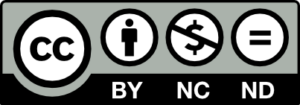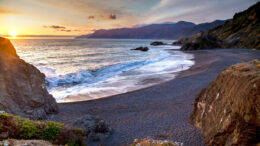This has been an epic year so far — and we expect the last four months of 2024 to be increasingly important and potentially world-changing.
With that in mind, we’re about to take our annual summer recharge break. We’ll be back with new articles and commentaries Sept. 3.
We’ll have plenty to keep us busy in the meantime — including researching, writing, and editing some great stories we have lined up for September and October.
But we’ll also devote ourselves to absorbing new influences and inspiration, experiencing nature, talking to friends and colleagues, and reflecting on where we’ve gone so far in 2024. We hope you have an opportunity, now or later, to do the same.
Meanwhile, we have an assignment (or 16) for you — things you can do over the next couple of weeks to help set the path for a powerful fall:
-
- Go someplace new. There’s probably a park, wildlife refuge, beach, river, forest, or other natural place nearby that you haven’t had a chance to visit yet. Maybe it’s a place you’ve always meant to go or a new spot you’ve just discovered on the map. Don’t wait: Make a plan and go there.
- Thank someone for helping the planet or those who live on it. Think about a scientist, activist, journalist, neighbor, business owner, or even politician who has made a difference in the past year. Too many good deeds go unrecognized, and even the briefest appreciation can do wonders to help someone keep moving forward.
- Look at a bug. I mean really look at one. Get down on your hands and knees, if you’re able, and watch an ant or a butterfly or a slug (not a bug, I know, but any invertebrate will do). Watch how they interact with plants, the soil, and the rest of the world. You may come away with a new appreciation for the species around you.
- Call your mayor and ask for stronger local environmental protections. In this season of national elections, it’s too easy for people to overlook their mayor, town councilmember, city manager, or other local leaders as potential environmental leaders or advocates. Assume they’re lonely during these dog days of summer and pick up the phone.
- Set your environmental goals and strategies for the rest of the year. There’s an endless chain of opportunities to help make a difference. Look for upcoming events in your local paper or on Facebook, Meetup, or your local environmental groups’ websites. Or maybe pick a cause (say, cleaning up a neighborhood park or advocating for a faraway endangered species) and strategize five steps you hope to take before the end of the year.
- Fix something, learn how, or teach someone else. In an increasingly disposable world, everything we keep out of a landfill is a victory. (Check with your local library; many of them offer free repair clinics a few times a year. Sign up to get your stuff fixed, or to volunteer and help others.)
- Think about writing something for us. We’re always looking for local voices from around the world to pen op-eds or submissions to our Species Spotlight and Protect This Place features. Full details here. (Freelance journalists: We’ll reopen to pitches for your stories in November.)
- Take a friend in need to a green space. Maybe you have an elderly neighbor or relative, a friend without access to transportation, a special-needs child, a coworker in grief, or a neighbor who’s lonely. Share some time and some outdoor experiences with them. Make some memories.
- Read an environmental book. We have hundreds of recommendations to choose from. And you don’t have to read them at the beach — anyplace quiet will do.
- Donate to or volunteer with an environmental group or disaster-recovery organization. Time, money, and expertise are all needed and valued. (An extra tip: Donating blood is often simple and always in need. That’s not a specifically environmental act, but in this age of ever-increasing disasters, it could save a life.)
- Plan for the November elections. Start by checking your voter registration — it never hurts to make sure you haven’t accidentally fallen off the rolls. You can also volunteer for a get-out-the-vote initiative, help a campaign, sign up to be a poll worker, or plan to help other people vote. (We have a couple of dozen other ideas here.)
- Start a nature sketchbook. Drawing nature is fun, and it gives you a new way to look at and appreciate the world around you. Use your journal to capture the details you might only see when you really look closely at a landscape, plant, or animal. Don’t get stressed out about the quality of your drawing, just pick up a pen, pencil, or marker and enjoy. This isn’t for publication; it’s just for you — like the nature you’re about to experience with fresh eyes. (Check out this video for some great tips on getting started.)
- Plant some native vegetation. We don’t all have land to rewild, but even an outdoor flowerpot can make a difference to local pollinators. And if you can convince your local business, HOA, or park to replace nonnative species — even better. (Not sure how to start? Check out these great state-by-state lists from the Xerces Society.)
- Put your feet in the water. A river, an ocean, a pond, a stream. Let it wash over you. Feel connected.
- Write a protest song or an environmental poem. Be creative. Express your rage, anxiety, hope, aspirations, or passions. Then share your work. Submit it to a literary magazine, go to an open-mic poetry reading, post it to YouTube, or just share it with your friends.
- Subscribe to our newsletter! Be prepared for the latest headlines as we return from our publishing break.
That’s it for now. We’ll see you on Sept. 3. Until then, stay safe, recharge, and stay connected.



